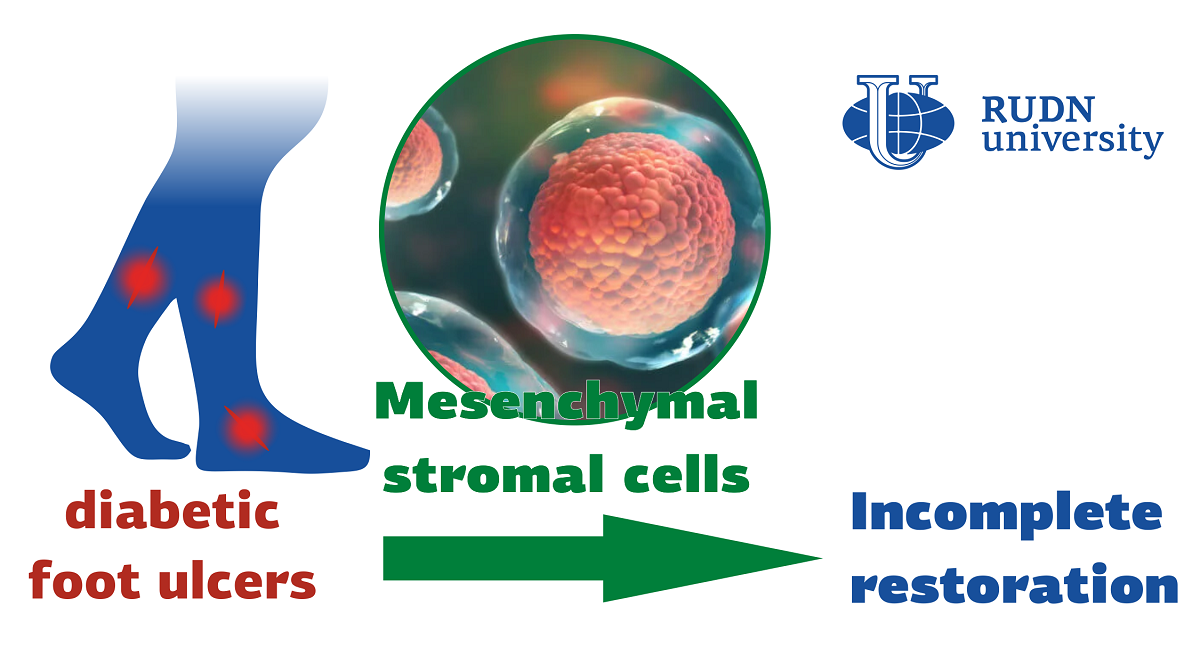Stem cell therapy for diabetic ulcers has not been fully effective on a long-term scale
One of the complications of diabetes mellitus is the so-called diabetic foot. This is the main cause of amputation in patients with diabetes. Oneof the new ways to treatit is stem cells. It is already used in clinical practice, but the results of the long-term effect are practically not described.
“Complications on the legs are the most common lesion among patients with diabetes. Clinical trials, as well as meta-analyses, have shown that stem cell therapy is a new effective treatment option for diabetic foot ulcers. However, to date, there is no data on the long-term results of such therapy based on it,” — Alexey Lundup,Candidate of Medical Sciences,Director of the Scientific and Educational Resources Center Center a “Cell Technologies” RUDN University.
Doctors investigated the results of treatment of three patients who three years ago underwent therapy of diabetic foot ulcers with the help of stem cells, namely, mesenchymal stromal cells, which can turn into bone cells, cartilage and fat cells. With the help of ultrasound and dermisandtoscopy, RUDN doctors estimated the density and thickness of the skin at the sites of healed ulcers and compared it with healthy areas.
None of the patients showed complications — neoplasms and hypertrophic scars,none of them relapsed. However, the density of collagen in the places of former ulcerson averagewas 57% compared to healthy tissues, and the thickness of the epidermis — by 72%. This suggests that the full recovery of the skin has not occurred. Doctors concluded: despite the indisputable effectiveness of stem cell treatment in the short term, this technique needs to be improved in order to achieve a good effect in the longterm.
“To our knowledge, this is the first study to present long-term results of topical application of mesenchymal stromal cells in low doses for the treatment of ulcers. Our study, although on a limitednumber of patients, shows that local administration of mesenchymal stromal cells in low doses is a safe and promising option. However, such therapy and basic preventive measures did not lead to a complete restoration of normal anatomical parameters of the skin, although it wasextremely effective for the initial closure of the wound in the early stages. Therapy based on mesenchymal stromal cells can be an adjunct to therapy, but other new approaches are needed to achieve better results,” — Alexey Lundup, Candidate of Medical Sciences, Director Scientific and educational resource centera “Cell Technologies” RUDN University.
The results are published in the journal Bioimpacts.
Sergey Ivanov, a scholar from St. Petersburg, has been named the first winner of RUDN University’s International Prize for Scientific Achievements in Mathematics, worth 5 million rubles.
Products derived from microalgae represent a cutting-edge development in the field of bioeconomy. The potential of this biological resource was discussed at the international research seminar “Foundations for a Green Sustainable Energy”, part of the BRICS Network University’s thematic group on “Energy”. The event was organized by the Institute of Ecology at RUDN University.
Ambassadors of Russian education and science met at a conference in RUDN University to discuss how they can increase the visibility of Russian universities and research organizations in the world, and attract more international students in Russia.
